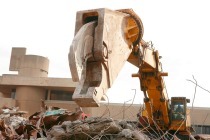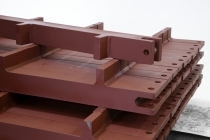Wear savings for stationary equipment in quarries and mines
At first glance, ordinary steel seems less expensive per kilo or pound than harder steel. But the real question is, how much of this cheaper steel operators need to buy, process, install and maintain over time?
Goals for every wear-prone application:
Maximizing equipment and machine wear resistance
Maximizing productivity and the safety of the operation
Minimizing downtime for replacements, maintenance and repairs
To achieve these objectives SSAB has tested wear steel at different hardness levels – and has achieved interesting results (Table 1). As the table shows, upgrading from an AR 400 steel to Hardox® 500 wear plate doubles the service life – from 2.4 to 4.8 in relative numbers. This can be interpreted in various ways:
During the equipment’s lifetime, it’s possible to cut wear plate purchases by 50 %
Operators only need to process 50 % as many plates in the workshop and only need to install 50 % as many plates, which saves man-hours and is a safety benefit
Instead of downtime and man-hour costs for two maintenance stops, operators only need one stop for the same period of time
This adds up to a 40 % daily cost reduction compared to an AR 400 steel
With Hardox® 500, durability pays off – both in cost savings and sustainability. Using less steel means that less steel is produced, transported, processed and installed over the course of the equipment’s lifespan, reducing your environmental footprint.
What makes Hardox® wear plate more cost-efficient?
Several qualities set Hardox® wear plate apart from conventional wear steels. It is a highly consistent material with guarantees for thickness, flatness and bending properties. This results in predictable processing in the workshop and predictable performance and maintenance planning in the field.
One of the most critical factors in wear resistance is the steel’s through-thickness hardness. Hardox® wear plate retains at least 90 % of its surface’s hardness all the way to the core. This unique benefit explains its exceptionally long service life, and why the data proves that Hardox® is a smart investment for your bottom line. Fig. 3 shows the hardness measurements through a cross section of a 75 mm thick plate of Hardox® 500 versus a standard AR 500 steel.
To find the optimal grade and thickness of Hardox® wear plate for a particular equipment and environment, SSAB recommend a thorough evaluation of the wear conditions and abrasive materials. SSAB’s technical development managers and material specialists have decades of experience in solving wear challenges. They will help operators assess their specific challenges and recommend the best Hardox® grade for maximum durability and performance.







